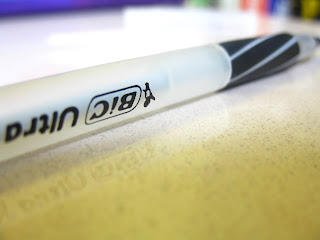- three types of food photography: packaging, editorial, and advertising.
- packaging
- most technical and tedious
- every detail counts
- show food realistically so people will buy
- editorial
- not as much about detail as the other types of food photography.
- more about the "wow factor" of food.
- advertising
- less tedious than pckaging, but more tedious than editorial.
- photographers have their own specific way they want a shot to be staged or set up.
- an artist draws what the picture should look like and photographer takes a picture as close to the drawing as possible.
- the angles you shoot the picture at are very important
- make sure everything is in focus and you show some texture if any
- team
- photographer
- photographer assistant
- prop stylist
- assistant prop stylist
- client
- client's client
- client's boss
- and many more.
Wednesday, September 29, 2010
career photography notes
FOOD photography.
Tuesday, September 28, 2010
Wednesday, September 15, 2010
photojournalism
This picture of the firemen was taken during the San Bruno fire/ explosion last Thursday. It portrays how big the flames were with proportion to the firefighters. Though the firefighters are the main objects in the image, they are not very visible, drawing your eyes to the enourmous flames.
This picture was taken during the 49ers vs. the Seattle Seahawks game on September 12, 2010. It shows one of the 49er players getting tackled, giving the person veiwing this photo that they were not doing so well during the game.
This picture was taken by David Bathgate. It portrays the emotions of the soldiers that are fighting in the war, but doesnt tell you why they are feeling the way they are. David says, "Viewing the world through photojournalistic eyes means more than taking the occasional snapshot. It involves a deeper look to uncover the facts and then present them in an informative and creative way."
I do not know who took this picture, but it really stood out to me because wedding days are normally the most exciting day of a woman's life, but in this picture, the woman looks very relaxed, like it is no big deal.
This picture was taken by Jake LeBoeuf. You dont know nexactly where this picture was taken but you can guess according to the clothes the children are wearing and the way the children look. It definitely portrays a lot of their culture through the clothing.
Monday, September 13, 2010
group photography
Thursday, September 9, 2010
journal notes pgs. 60 - 65
This picture shows an example of both a long EXPOSURE to light and a slow SHUTTER SPEED. The long exposure to light allowed more light to pass through the camera and capture the lights of the cars passing by as the shutter reamined open. As you can see, everything in the picture is still in focus and sharp, meaning there was absolutely no CAMERA MOVEMENT invlolved. in addition, the photographer may have changed the FILM SPEED, using a higher ISO SETTING to make the camera more sensitive to the light. http://photography.nationalgeographic.com/staticfiles/NGS/Shared/StaticFiles/Photography/Images/POD/s/street-light-exposure-florida-93001-xl.jpg
These pictures were taken my a professional photographer named Diana who worked at the resort we were staying at while my mom and I were on vacation in Cancun last spring break. the picture at the top shows that she used a small APERTURE (large F-STOP) in order to get a larger DEPTH OF FIELD, keeping everything in the picture in focus. But, in the picture at the bottom, she used a wide aperture, decreasing the depth of field, only keeping me in focus.
journal notes pgs. 36 - 48
 |
TIMING - i took this picture while we were driving on the Golden Gate Bridge and i had to time the shot perfectly to take the picture right when a person was walking by in order to show the concept of motion. |
 |
| PROPORTION - my cousin, on the left in the white shirt, is acutally only 4.9 feet tall, but next to her boyfriend's daughter, she looks a lot taller than she really is. |
 |
| RADIAL BALANCE - this picture portrays radial balance because the petals all radiate from the center of the flower. |
Wednesday, September 8, 2010
journal notes pgs. 27 - 35
 |
| TEXTURE - i took this picture for our photo quiz. i loved how the lighting was in this area and immediately thought of taking a picture of the texture of the leaves. |
Thursday, September 2, 2010
Wednesday, September 1, 2010
Subscribe to:
Comments (Atom)
















.jpg)



























